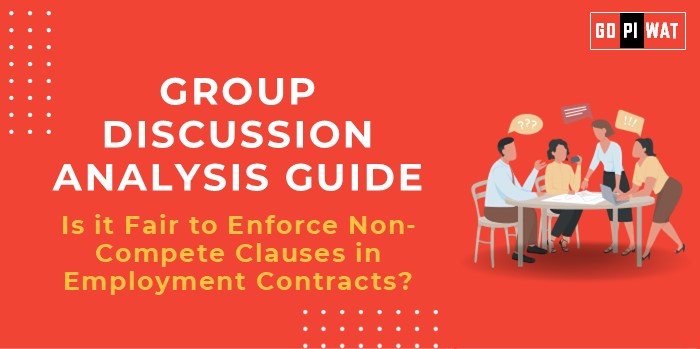📋 Is it Fair to Enforce Non-Compete Clauses in Employment Contracts?
🌐 Introduction to Non-Compete Clauses
Context: In the corporate world, non-compete clauses aim to protect businesses from losing trade secrets or facing direct competition from former employees. However, they raise ethical and economic debates, especially when they restrict career mobility and innovation.
Background: Non-compete agreements, typically part of employment contracts, prohibit employees from working with competitors or starting a competing business for a set period post-employment. These clauses are prevalent in industries like technology, healthcare, and finance, where intellectual property and client relationships are critical assets. Recently, regulatory bodies like the Federal Trade Commission (FTC) have proposed limitations on these clauses due to their potential to stifle innovation and employment flexibility.
📊 Quick Facts and Key Statistics
💵 Economic Impact: Non-compete clauses cost the U.S. economy an estimated $300 billion annually by reducing labor mobility.
🌟 Policy Trends: California bans non-compete clauses, fueling Silicon Valley’s innovation boom.
🌍 Global Context: 70% of countries allow non-compete clauses with regulatory oversight.
🤝 Stakeholders and Their Roles
- 🏢 Employers: Protect trade secrets and client lists; maintain a competitive edge.
- 🧑💼 Employees: Seek career growth and freedom; impacted by restricted opportunities.
- 🏛️ Regulators: Ensure fair labor practices while balancing corporate interests.
- ⚖️ Judiciaries: Interpret and enforce the validity of these clauses.
🏆 Achievements and Challenges
Achievements
- 🔒 Corporate Safeguards: Protects sensitive information like proprietary technology.
- 💼 Investment Security: Encourages companies to invest in employee training without fear of immediate loss.
- 🤝 Client Retention: Prevents employees from poaching clients post-employment.
Challenges
- 🚷 Employee Mobility: Restricts workers from pursuing better opportunities.
- 📉 Economic Consequences: Reduced competition and innovation in restricted industries.
- 🌐 Global Comparison: California’s ban correlates with higher innovation rates compared to states enforcing these clauses.
💡 Case Study: California’s ban on non-compete clauses is credited with fueling Silicon Valley’s dynamic tech ecosystem, fostering greater talent mobility and innovation.
⚖️ Structured Arguments for Discussion
- ✅ Supporting Stance: “Non-compete clauses are essential to protect intellectual property and promote corporate stability.”
- ❌ Opposing Stance: “These clauses unfairly limit employee mobility and innovation, creating an imbalanced labor market.”
- ⚖️ Balanced Perspective: “While non-compete clauses have merits in protecting trade secrets, they require reform to balance corporate and employee interests.”
💬 Effective Discussion Approaches
- Opening Approaches:
- 📊 Statistical Insight: “With 18% of U.S. workers bound by non-compete clauses, we must evaluate their fairness and economic impact.”
- 🌟 Contrast Example: “Silicon Valley thrives despite a ban on non-compete clauses, while restrictive states lag in innovation.”
- Counter-Argument Handling:
- ✔️ Use data to refute blanket claims against non-competes.
- 💡 Highlight sector-specific nuances, e.g., healthcare vs. tech.
🔍 Strategic Analysis of Strengths and Weaknesses
- Strengths: Protects intellectual property; secures competitive advantage.
- Weaknesses: Limits employee freedom; reduces market competition.
- Opportunities: Reform clauses for fairness; foster open innovation ecosystems.
- Threats: Talent drain to jurisdictions with lenient policies.
🎓 Connecting with B-School Applications
Real-World Applications: Analyze the impact of non-compete clauses in strategy and HR management courses.
Sample Interview Questions:
- 💼 “How would you balance employee rights and corporate interests regarding non-compete clauses?”
- 🌐 “Discuss how non-compete reforms could affect innovation.”
Insights for Students: Focus on policy innovation and legal frameworks for employment contracts.


